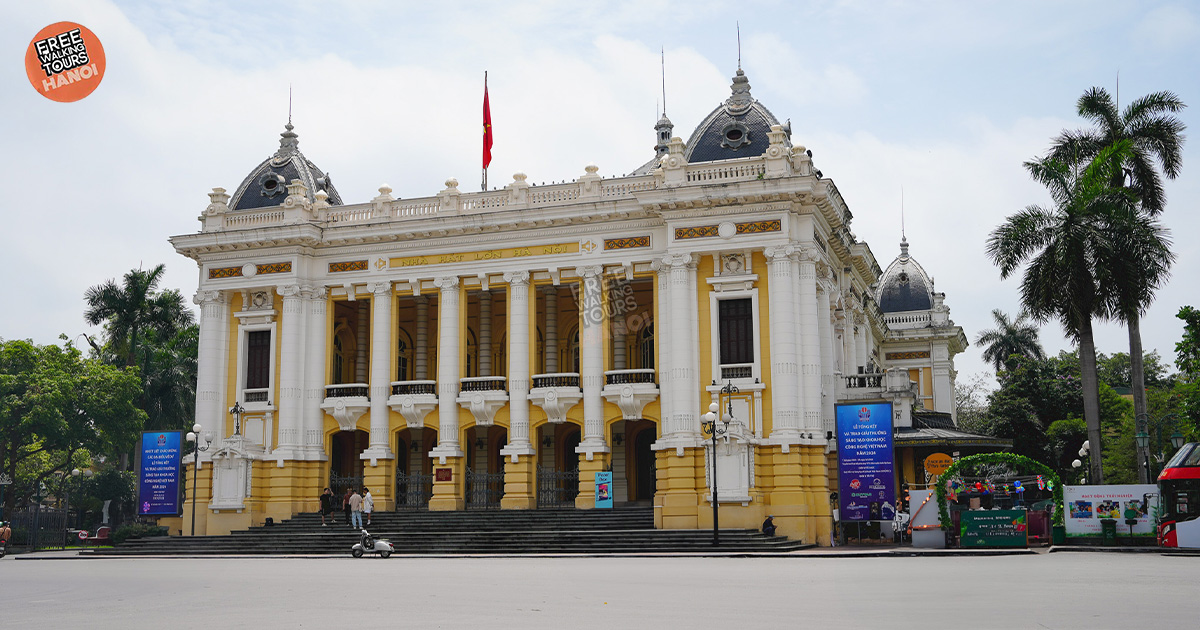
Hanoi’s French Quarter isn’t just a neighborhood - it’s a living museum of colonial dreams and resilience. While the Old Quarter buzzes with tradition and tightly packed alleyways, the French Quarter tells another tale: of wide boulevards, yellow villas with wrought iron balconies, and the lingering scent of baguettes and history. For travelers tracing cultural roots and architecture, a walking tour through this quarter is not just scenic - it’s transformative.
Unlike the Old Quarter’s maze-like design, the French Quarter offers a deliberate sense of grandeur. Developed during the late 19th and early 20th centuries under French colonial rule, this part of Hanoi was modeled after European cities, especially Paris. The streets are broad, the buildings grand, and the atmosphere nostalgic - a striking contrast to the rest of the city.
On our free walking tour, we begin near the Opera House - an architectural jewel inspired by the Palais Garnier in Paris. Completed in 1911, this structure once hosted performances reserved for French officials and elite Vietnamese. Today, it remains a symbol of cultural fusion, still alive with opera, ballet, and concerts.

The Hanoi Opera House - a colonial masterpiece still echoing with cultural performances today.
A few steps from the Opera House, our journey continues along Trang Tien Street, where art galleries, cafes, and boutiques now inhabit French-built villas. Their ochre facades, green shutters, and balconies whisper stories of diplomats, intellectuals, and quiet revolutions.
One standout is the Tonkin Palace (now the State Guest House) - once a key seat of French power. Though not open to the public, its elaborate exterior is enough to transport any visitor back in time.
While the architecture is French, the soul remains Vietnamese. Locals gather at Ly Thai To Park, children ride bicycles past historical landmarks, and vendors sell lotus tea on the sidewalks. This juxtaposition is what makes Hanoi’s French Quarter feel authentic: it isn’t preserved as a frozen relic, but lived in and adapted.
You’ll pass by the St. Joseph’s Cathedral, another colonial landmark, modeled after Notre-Dame de Paris. But look closely - the surrounding streets are filled with vendors selling sticky rice and áo dài tailors, blending East and West in daily life.
St. Joseph’s Cathedral, where French Gothic architecture meets Hanoi’s street life.
The French didn’t just leave their mark on architecture. Their culinary legacy is felt in every bite of banh mi and every sip of egg coffee, which originated during the colonial era when milk was scarce. Enjoying a coffee at Café de Paris or La Terrasse lets you reflect on Hanoi’s ability to make foreign influences distinctly its own.
European travelers often find a sense of familiarity here - the echoes of Paris under the sun of Southeast Asia. For American and Australian visitors, it’s a chance to walk through a chapter of world history often glossed over in textbooks.
Travelers appreciate how this free walking tour brings context to the grandeur: hearing stories of how buildings were repurposed post-independence, how resistance movements met in secret, and how this part of Hanoi continues to evolve.
Just a few blocks away from the grandeur of the French Quarter, the winding alleys of the Old Quarter offer another face of Hanoi. (Read more in Experience Hanoi’s Old Quarter Through Local Eyes).